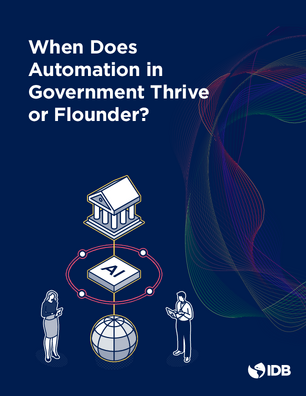When Does Automation in Government Thrive or Flounder?
ISBN PRINTED
9781597825498
Date
Jan 2024
Government organizations worldwide are harvesting the transformative potential of digital technologies to automate interactions with citizens, businesses, and each other. Automation can bring benefits, such as an increase the efficiency of government operations, quality of government decisions, and convenience of governmentcitizen interactions. It can also produce adverse outcomes, such as compromising social value for economic gains, misjudging citizen circumstances, and having to compensate for the effects of algorithmic errors. This publication delves into the implications of automation and how to implement initiatives that increase its benefits and manage its risks. Specific questions include: (i) how to identify areas of public policy and public services that are most apt for automation; (ii) what questions, regarding potential benefits and costs, should governments ask before embarking on a process of automation; (iii) how governments should monitor the benefits and costs in the process of automation and establish whether automation has had the desired impact; and (iv) how to organize and manage automation efforts. The authors explore these issues through 12 case studies from 8 countries (Argentina, Chile, France, Norway, Paraguay, Singapore, Spain, Sweden), the European Union, and 7 government sectors (administration, border control, finance, justice, procurement, registry, and welfare). Each case study identifies the problem automation was designed to resolve or service it was designed to deliver; potential benefits and costs of automation that were relevant in each context; and examples of how automation was implemented to reduce costs and monitored to ensure high impact without unintended negative consequences. The cases guide the formulation of a taxonomy of benefits and risks of government automation initiatives and the four broad factors that government organizations should consider when aiming to realize the benefits and manage the risks of such initiatives: institutional readiness, human capacity, process innovation, and whole-of-government approach. It also presents strategies for implementing the factors and discusses how they help produce public value.
Generative AI enabled





